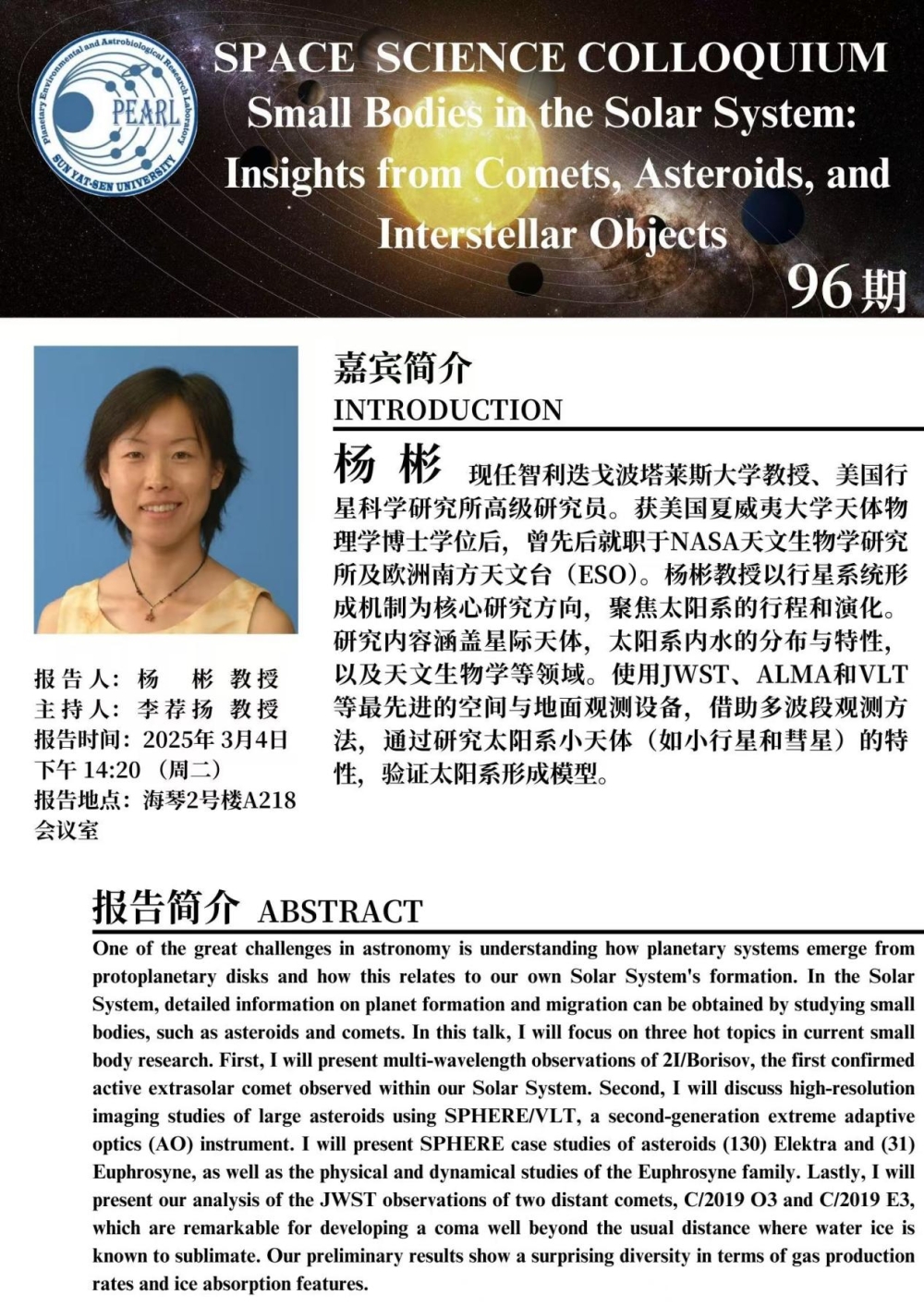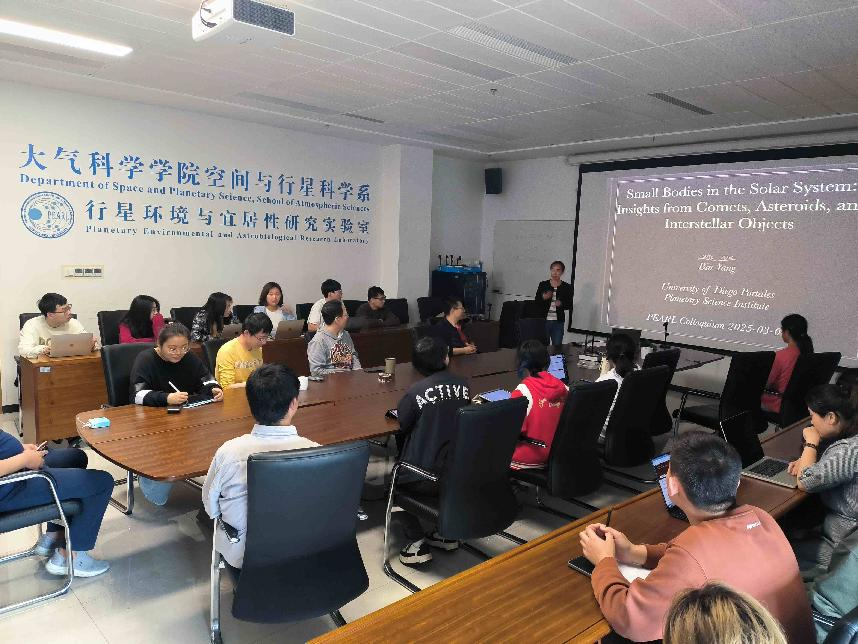Small Bodies in the Solar System: Insights from Comets, Asteroids, and Interstellar Objects
Small Bodies in the Solar System: Insights from Comets, Asteroids, and Interstellar Objects
报告人简介:杨彬现任智利迭戈波塔莱斯大学教授、美国行星科学研究所高级研究员。获美国夏威夷大学天体物理学博士学位后,曾先后就职于NASA天文生物学研究所及欧洲南方天文台(ESO)。杨彬教授以行星系统形成机制为核心研究方向,聚焦太阳系的行程和演化。研究内容涵盖星际天体,太阳系内水的分布与特性,以及天文生物学等领域。使用TWST、ALMA和VLI等最先进的空间与地面观测设备,借助多波段观测方法,通过研究太阳系小天体(如小行星和彗星)的特性,验证太阳系形成模型。
Abstract: One of the great challenges in astronomy is understanding how planetary systems emerge from protoplanetary disks and how this relates to our own Solar System's formation. In the Solar System, detailed information on planet formation and migration can be obtained by studying small bodies, such as asteroids and comets. In this talk, I will focus on three hot topics in current small body research. First, I will present multi-wavelength observations of 2I/Borisov, the first confirmed active extrasolar comet observed within our Solar System. Second, I will discuss high-resolution imaging studies of large asteroids using SPHERE/VLT, a second-generation extreme adaptive optics (AO) instrument. I will present SPHERE case studies of asteroids (130) Elektra and (31) Euphrosyne, as well as the physical and dynamical studies of the Euphrosyne family. Lastly, I will present our analysis of the JWST observations of two distant comets, C/2019 O3 and C/2019 E3, which are remarkable for developing a coma well beyond the usual distance where water ice is known to sublimate. Our preliminary results show a surprising diversity in terms of gas production rates and ice absorption features.



